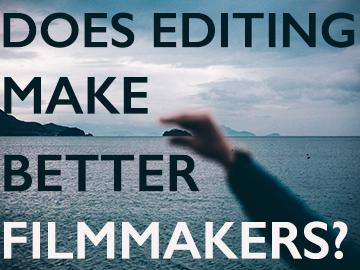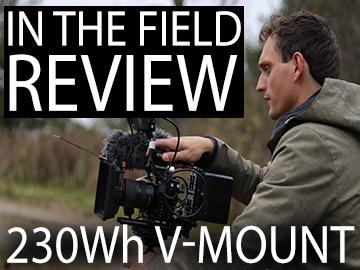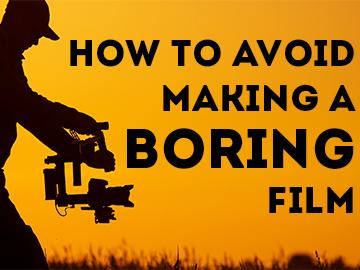As a screenwriter or a director, you’re responsible for so many different parts of the filmmaking process. The work achieved by both of these roles literally dictate what the film will turn into.
As a screenwriter, you have to conceive and birth the story. You have to labor over it to make it into something amazing that will hit 5,000 story beats and resonate with a vast audience.
As a director, everyone answers to you. This sounds cool until you’re on set with hair and makeup wanting to know the style you’re going for, actors needing direction, the DP trying to go over blocking, and the script supervisor pointing out 15 different shots you missed. It’s a lot.
And both positions, screenwriter & director, require tons of training before you can even begin to feel comfortable doing what you do. Time and experience are the best teachers. Even the country’s top film school can’t prepare you to be a director if you don’t practice directing. And you can hire an Oscar winning screenwriter to train you one on one, but you still won’t be prepared until you practice screenwriting.
A shortcut to nearing perfection in both of these roles is to assume other roles during the process of production. You don’t have to become a jack of all trades, but it will help for you to learn what goes into it and what people need from you in order to make the film great.
As a screenwriter or a director, you can drastically improve your skills by simply taking the time to edit some of your own work. There’s a little bit of magic that comes along with aligning the video clips together to form a cohesive & captivating story.
Here are a few things I’ve personally come to understand while editing my own films;

1. CREATING ADEQUATE COVERAGE
When you’re crafting your first shot list, it’s hard to tell exactly what you’ll need as far as coverage goes. You might want to get a close up of every character for every scene. Then a medium shot. Then a wide shot. Then over the shoulders. A couple dolly shots. Some crane shots. A handheld tracking shot. But if it doesn’t suit your story, then it may be unnecessary and require more time on set. More time on set means more money. So unless you have an unlimited supply of time and money, then you might want to be more concise with your coverage.
Sometimes it’s difficult to envision your scene within your own head. But editing provides you with the unique opportunity to see your video clips and arrange them in any way you see fit.
Maybe you have a character piece and you want to show how a certain event affects your lead. While editing, you’ll be able to decide which shot and which camera movement best exemplifies their emotional reaction. If one shot works best, you may even avoid filming the other type when crafting a similar scene in the future.
Maybe two friends are having a disagreement. They have come to a point in their conversation where they are very polarized. Perhaps two extreme closeups of each character will relay the dissent. Or maybe a wide shot showing how far they are from each other will show the tension of the moment. These are things you can toy around with while editing. And then learn from.

2. TRANSITIONS
Transitions are one of the most underrated aspects of filmmaking. They are rarely mentioned, but have a drastic effect on the impact of a film. Sometimes writers pen transitions into their screenplays. Sometimes transitions are added later in production. And sometimes they’re created in post.
**The really great ones are planned right from step one - script development**
So for anyone who’s not aware of the importance of transitions or what they can do, here’s my best explanation. A high quality transition will transport the audience smoothly into the next scene while relaying the theme and pending emotional changes. Transitions join scenes or sequences together while keeping the audience from disconnecting with the actions.
You may not even notice why, but transitions play a huge part in making comedic films funny. One way is through direct opposition. Maybe a woman tells her friend she’s done with her boyfriend and won’t answer any more of his calls. Then in the next scene, we see her texting him and calling him over and over. She’s doing the opposite of what she said and the quick cut to opposition has a comedic effect.
Apparently it’s a good idea to create nuance in your films instead of spelling out to your audience what everyone wants, and thinks, and intends to do. One cool, and nuanced, way to relay these things is through the use of metaphorical images. Perhaps your character is using subtext to tell someone how they feel, because they’re afraid to come out and say it. They say that they have this overwhelming feeling they can’t describe. And then you cut to a vehicle being destroyed by an industrial car crusher. This will inadvertently relay that character’s feeling of heaviness.
By purchasing a few stock videos, you could test these techniques out in post-production, even if you didn’t have the idea for them during production.

3. ESTABLISHING SHOTS
Something valuable I learned while editing one of my short films, was the importance of establishing shots. It can be jarring to cut from a scene of someone in their living room to another scene of them in the same place on a different day. With an establishing shot you can splice between these similar scenes and show the passing of time.
An establishing shot also lets the audience know where events are taking place and gives them a sense of the present location/surroundings. If ta shot shows a run down place in a dangerous neighborhood, then that already creates a feeling of uneasiness. If the shot shows a fancy home in a fancy neighborhood, then we have some idea of what type of life the characters are leading.

4. EFFECTS
Getting too crazy with effects and transitions can make your project look low-budget and amateur. It’s really important to make sure these elements make sense and that they do not take the viewer out of the realism of the story that they’re watching. It’s risky to do color changes or ripples, etc because it kind of breaks the fourth wall.
The cool opportunity that editing allows you is to be able to toy around with these effects and see how they impact the mood of your film. This way you can describe them in your screenplay or request them from your editor when you go back to playing the role of the director.
The phrase “slow motion” is often written into screenplays, unnecessarily. But working as your own editor will help you determine when slow motion is actually called for and whether or not it adds to the story.
Side note - It is only necessary to write “slow motion” on a shooting script.

5. PACING
While editing, you’ll learn how timing affects the mood. Some comedies or thrillers might use more scenes and location changes to give the film energy. For dramas, the editing is typically slowed down in order to take more time in the moment and develop emotions.
It takes a special skill to nail down the correct pacing when editing a film. And these skills are also applicable to writing the actual screenplay. A screenwriter must be able to envision how many scene changes in a page will create the correct pacing. Or how long a conversation should be to evoke the proper feeling from the audience.
Another benefit to editing is that you’ll figure out when things are getting slow or boring. And sections that should have been cut from the screenplay will now be cut from the film. Then, in the future, the writer will learn what must stay and what should go.

6. ON-SET MISHAPS
Editing your own film will prepare you to make difficult calls on set. When you’ve had the displeasure of trying to repair bad audio, you’ll learn the importance of checking in on your sound technician to make sure his levels are correct. You’ll also make sure the boom operator is positioned adequately to capture dialogue. You’ll also never forget to capture room tone.
When time runs long on set and you have to start sending people home, you’ll know from your editing experience which scenes you can tell the story without. You will now be able to more properly envision the movie in your brain.
Finally, if nothing else comes from editing your own film… one thing you will gain is an appreciation for your editor’s efforts and his expertise. It will help you empathize with your editor and understand what’s taking him/her so long to finish. You’ll want to go into the process with as much of an established vision for your final product as possible. That way, your editor won’t be fumbling around in the dark trying to create something from your clips. He or she will have a clear blueprint for how to craft the film that’s been swimming around in your head. All because you took a walk in the editor’s shoes and enhanced your skills by leaps and bounds.
So before you pay someone for film classes or training, take a simple shot at editing your own video. I promise, it’s worth it.
Guest Post by Destiny Macon
Hush Girl Productions
Winner of the 2020 IndieGrant



